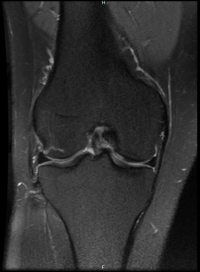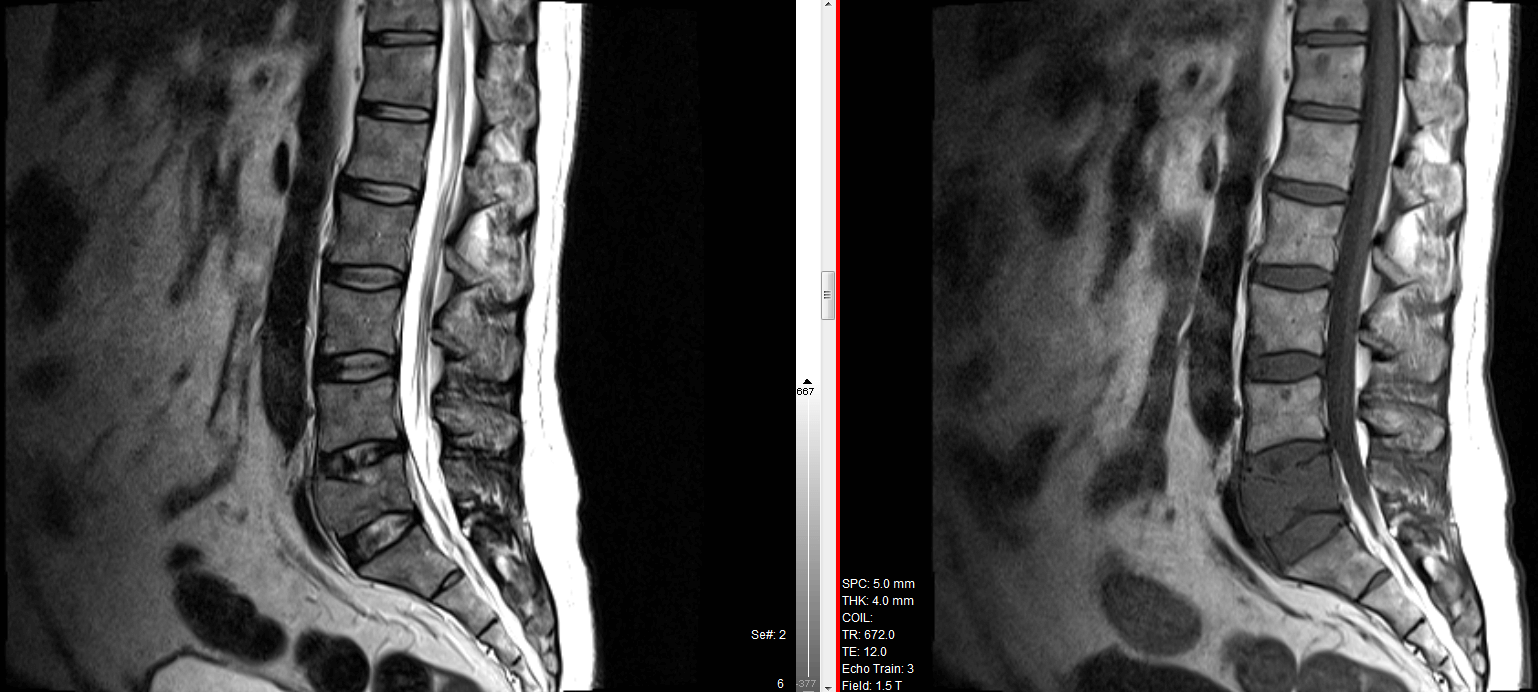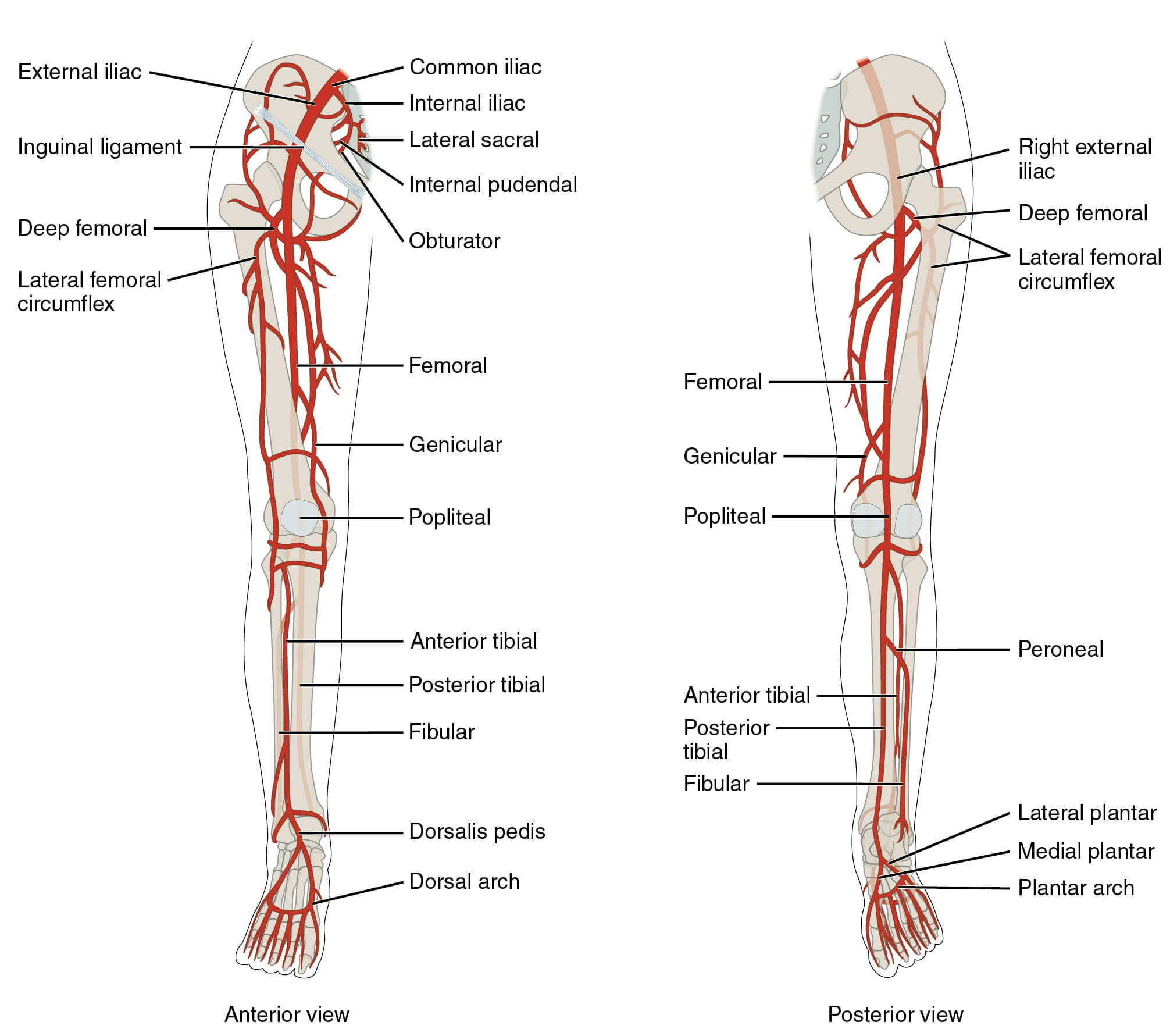Gout is a metabolic condition resulting from deposition of monosodium urate (MSU) crystals in and around the tissues of joints. It is an episodic monoarthritis (polyarthritis in 10% of cases)
Initially it was thought that gout happened due to excessive formation of uric acid but later on it became clear that it was mainly due to insufficient clearance by kidneys.
Hyperuricemia can result from
- overproduction of uric acid - 10-15% cases.
- underexcretion of uric acid - 85-90% cases - due to decreased renal clearance.
Hyperuricemia happens when there is too much uric acid in the blood. Only a minority of people with hyperuricemia develop gout. Hyperuricemia however, is present in all gout patients at some stage. It may not be apparent during the first episode possibly because acute deposition of uric acid in joint reduces its levels in blood.
- Uric acid is a by-product of purine metabolism.
- An enzyme called "Uricase" which breaks down uric acid to allantoin, which is high soluble, is not present in humans. Uric acid is poorly soluble in aqueous solutions and can crystallise.
- Uric acid is present in plasma as monosodium urate (MSU). When saturation point is exceeded, MSU crystals begin to precipitate. Urate crystals provoke inflammatory response from leukocytes and synovial cells.
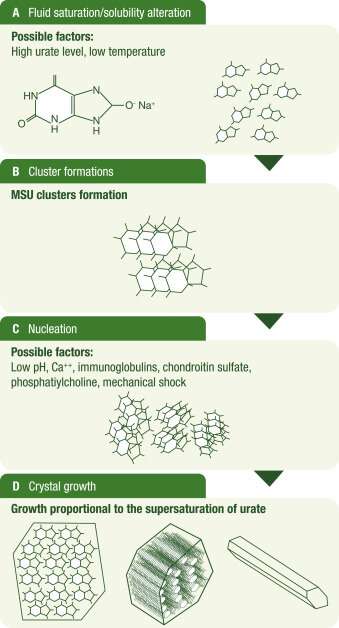
Uric Acid
- Uric Acid Normal Range - 0.21 - 0.42 mmol/L
- Aim of Urate lowering therapy is to bring uric acid levels to less than 0.3 mmol/L
| Uric Acid | Monosodium Urate |
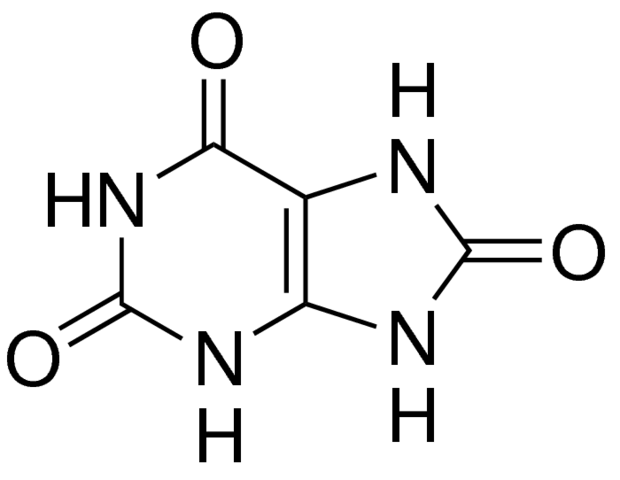 |
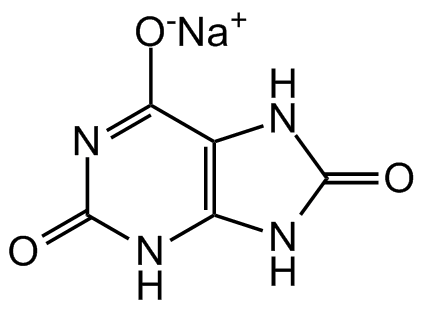 |
Risk Factors for Gout
- Factor which increase uric acid production are male sex, alcohol consumption, obesity, weight gain
- Factors which reduce renal clearance of uric acid are diuretics, low dose salicylates (aspirin), renal insufficiency.
- Saturnine Gout is gout associated with lead toxicity. Lead directly reduces solubility of uric acid in synovial fluid. Lead nephropathy leads to reduced clearance.
- Joint trauma and cooling of distal joints also reduce solubility of uric acid and can precipitate a gout attack. (gout in 18th century was known as pheasant hunters toe where hunters would hunt in cold marshes and drink alcohol during night time and develop podagra - acute inflammation of 1st MTP joint)
- Insulin resistance has also been implicated in pathogenesis of gout.
Purines & Pyrimidines
Purines & Pyrimidines are building blocks of DNA and RNA.
- Adenine (A) and Guanine (G) are purines. Purines are broken down into uric acid which is passed in urine. Purines are a 2 ring structure.
- Cytosine (C), Thymine (T) and Uracil are pyrimidines. pyrimidines are 1 ring stucture.
- DNA is made up of 4 building blocks called Nucleotides (A,T,G,C)
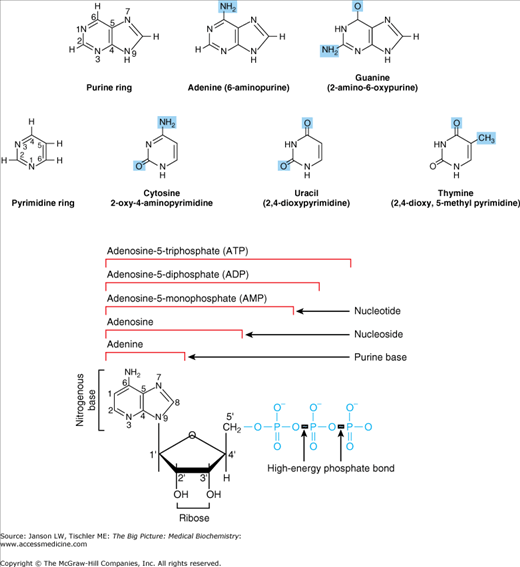
Basic Structure of Nucleosides and Nucleotides. Five major nucleoside bases are common in human biology, including the purines (two-ring structure) adenine and guanine (top) and the pyrimidines (one-ring structure) cytosine, uracil, and thymine (middle). Nucleosides (bottom) are made of a nitrogenous base, usually either a purine or pyrimidine, and a five-carbon carbohydrate, usually ribose. A nucleotide is simply a nucleoside with an additional phosphate group or groups (blue); polynucleotides containing the carbohydrate ribose are known as ribonucleotide or RNA. If 2′ hydroxyl group (OH) is removed, the polynucleotide deoxyribonucleic acid (DNA) results. [Adapted with permission from Naik P: Biochemistry, 3rd edition, Jaypee Brothers Medical Publishers (P) Ltd., 2009.]
Excretion of Uric Acid
Approximately two-thirds of uric acid is excreted by the kidneys, while the remaining one-third is excreted by intestinal uricolysis. In the kidneys uric acid is filtered at the glomerulus. 90% of uric acid is reabsorbed. Around 10% is excreted in urine.
Urea Cycle (different to uric acid)
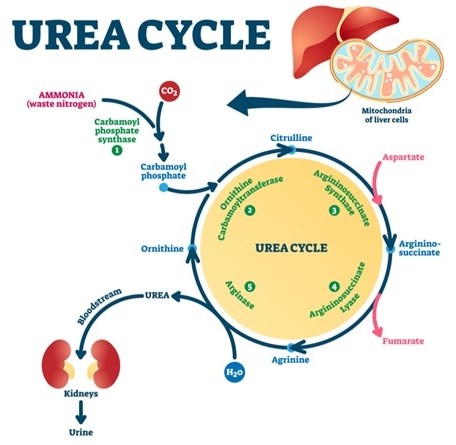
In the human body, deamination takes place in the liver. It is the process by which amino acids are broken down. The amino group is removed from the amino acid and converted to ammonia. The rest of the amino acid is made up of mostly carbon and hydrogen, and is recycled or oxidized for energy. Ammonia is toxic to the human system, and enzymes convert it to urea or uric acid by addition of carbon dioxide molecules (which is not considered as deamination) in the urea cycle. Urea and uric acid can safely diffuse into the blood and then be excreted in urine.
Urea and Uric Acid Metabolism

End product of protein metabolism is urea whereas purine metabolism produces uric acid as its end product.
Gout Pathogenesis
Ref: Lancet
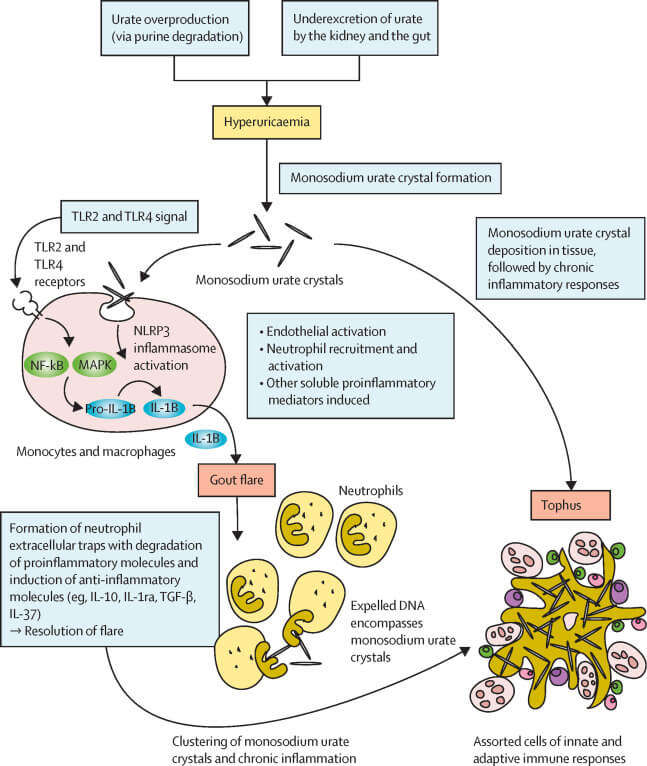
Gout Management
Acute attack - manage pain
- NSAIDs, Colchicine
Urate lowering therapy - to prevent recurrent attacks
- Xanthine oxidase inhibitors - Allopurinol, febuxostat (if allopurinol not tolerated)
- Uricosurics - It helps the kidneys to get rid of uric acid, thereby lowering the levels of uric acid - Sulfinpyrazone, Probenecid. Probenecid competitively inhibits the transporter responsible for uric acid reabsorption. Probenecid is reabsorbed, not uric acid.
- Uricases - drugs that convert uric acid to allantoin - very limited use due to potential side effects
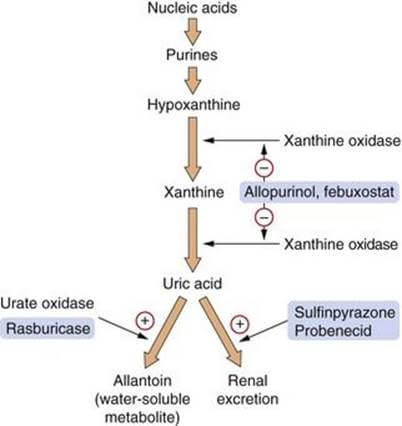
Glossary:
- Oxidation - Loss of electron during a reaction is called oxidation.
- Phosphorylation - addition of a phosphoryl group (PO3-) to an organic molecule is called phosphorylation.
- Dephosphorylation - removal of phosphoryl group is called dephosphorylation.
- Deamination - removal of an amino group from a molecule is called deamination. In the human body, deamination takes place in the liver. It is the process by which amino acids are broken down. The amino group is removed from the amino acid and converted to ammonia. The rest of the amino acid is made up of mostly carbon and hydrogen, and is recycled or oxidized for energy. Ammonia is toxic to the human system, and enzymes convert it to urea or uric acid by addition of carbon dioxide molecules (which is not considered as deamination) in the urea cycle. Urea and uric acid can safely diffuse into the blood and then be excreted in urine.
- Citrullination - is the conversion of amino acid arginine to citrulline. It is also called deimination. Citrulline is not one of the 20 standard amino acids. The immune system can attack citrullinated proteins, leading to autoimmune diseases such as rheumatoid arthritis & multiple sclerosis.
